The relationship between two quantities can be described using comparison terms. There are primarily three comparison terms: more than (>), less than (<), and equal to (=).
More than (>):
When one quantity is greater than the other quantity, we use “more than”. For example, 5 > 3.
Less than (<):
When one quantity is less than the other quantity, we use “less than”. For example, 8 < 10.
Equal to (=):
When two quantities are the same, we use “equal to”. For example, 15 = 15.
Understanding More Than
The meaning of more than in math is an inequality used to compare two or more numbers, quantities, or values. It is used when a quantity or number is bigger or larger than the second or the rest of the quantities or numbers. It states that one value is greater than or larger than or bigger than the other. The sign for more than is “>”. This is also called greater than.
For example, there are 8 balls in Bag A, and 5 balls in Bag B. On comparing, we can say that Bag A has more balls than Bag B.
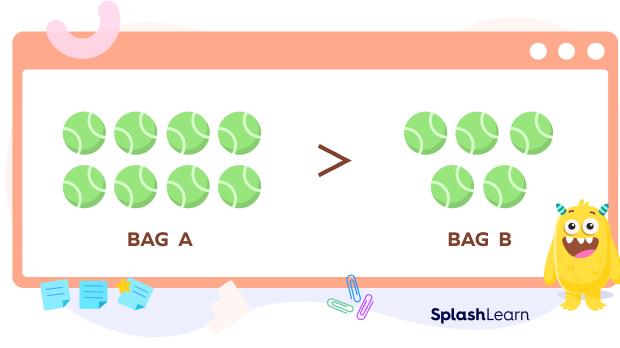
Likewise, length, weight, and capacity can be compared as well. For example, Bella has a red pencil of length 5 cm and a blue pencil of length 3 cm. Clearly, the length of the red pencil is bigger than that of the blue pencil, i.e., 5 cm > 3 cm.
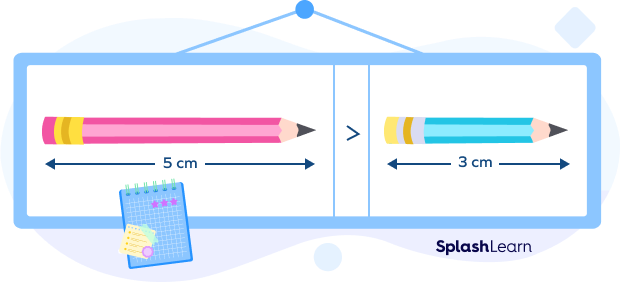
Let’s consider some more examples:
Jade has to choose from the last two sacks of sugar left in the store: one weighs 11 lb and the other weighs 33 lb. She wanted to buy greater than 11 lb of sugar. Since 33 lb > 11 lb, she chose the sack that weighs 33 lb.
Levi and Jason went shopping. Levi had $200 and Jason had $150. They liked an outfit that cost $170. Since Levi had more money than the cost of the outfit, he purchased it. $200 > $170.
Recommended Games
More Than on Number Line
To show more than in math, we use an empty circle to mark the limit value and point the arrow toward the given condition of inequality. An empty circle shows that a limit value is not the solution to the given inequality.
Let’s look at the steps on how we can represent an inequality of the form y > 4 on the number line.
Step 1: Locate “4” on the number line and mark it with the empty circle.
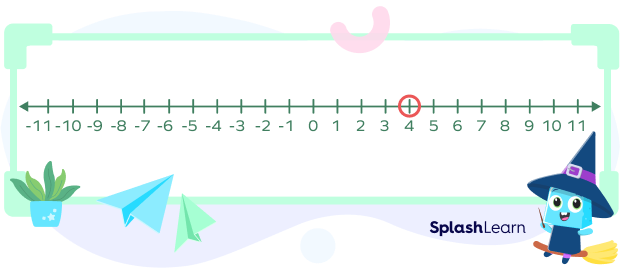
Step 2: The inequality shows that the variable is allowed to take any value greater than 4, which means all the values to the right of the circle. Starting from here, extend an arrow to the right end, signifying all the values the variable y can have.
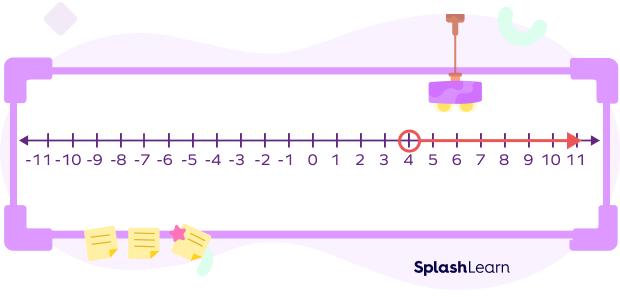
Note: If the inequality was “more/greater than or equal to”, we fill the circle. The filled circle shows that the limit value is also the solution to the given inequality.
Recommended Worksheets
Difference between Comparison Symbols:
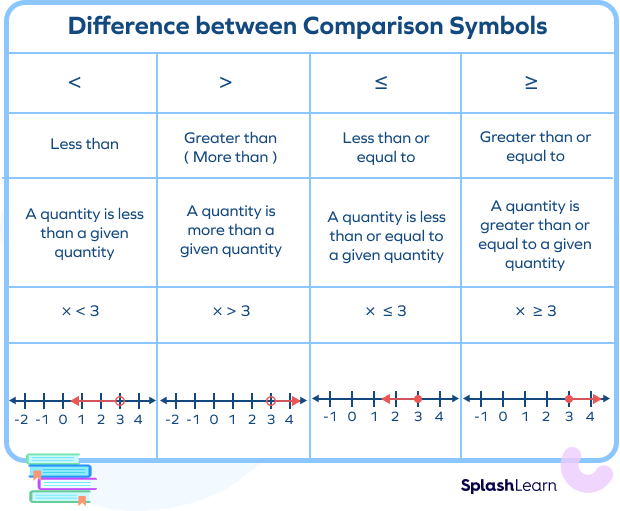
Solved Examples
Example 1: State whether the given statements are true or false.
- 23 > 14.
- 4 > 40.
- 17 ounces > 20 ounces.
- 10 lb > 9 lb.
Solution:
- True
- False
- False
- True
Example 2: Eva’s house number is greater than 469. Which of the following is her house?
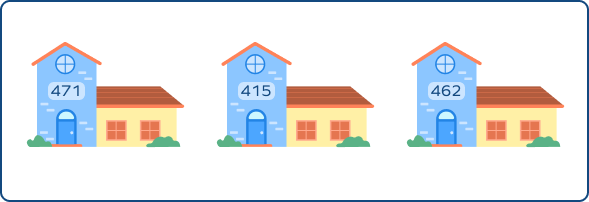
Solution:
471 > 469. So, Eva’s house is the one with the number 471 written on it.
Example 3: Graph x >2.
Solution:
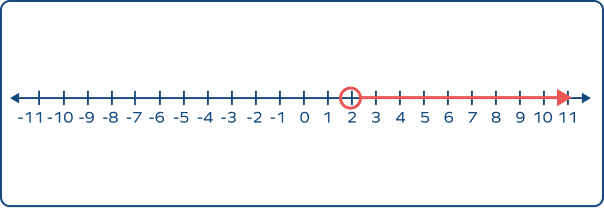
Example 4: Select the number that is greater than 15 from the given set of numbers.
15, 21, 14, 23, 51, 7, 53, 74, 12, 0, 16
Solution:
21, 23, 51, 53, 74, 16
Practice Problems
More Than - Definition With Examples
Choose the number that is greater than 50
51 $\gt$ 50. All other options are either less than or equal to 50.
Choose the graph that describes a number greater than 0.
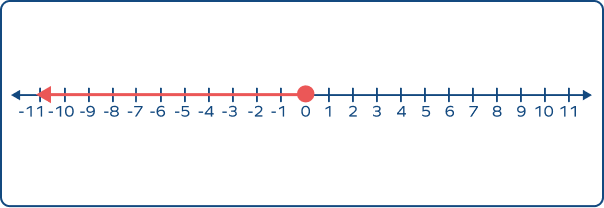
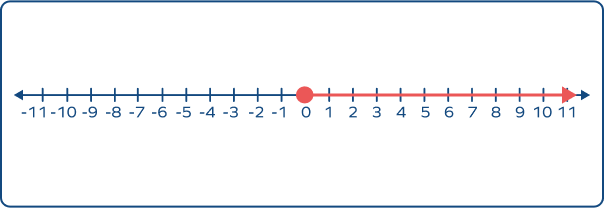
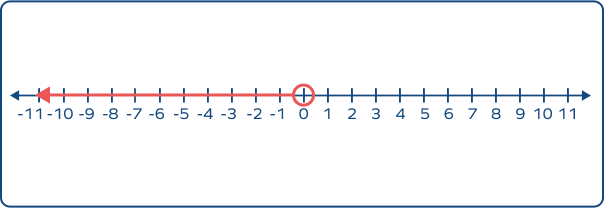
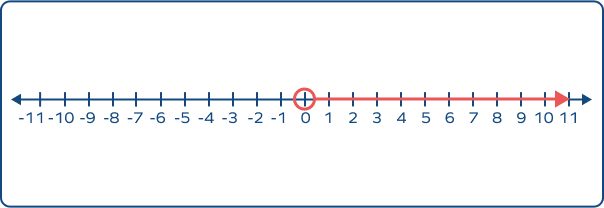
A graph of numbers greater than 0 should have an empty circle marked at 0,
and an arrow starting from 0 and extending to the right of it.

Choose the statement that explains 21 $\gt$ 12.
The “$\gt$” symbol shows that the first number is more/greater than another number.
There are 17 marbles in Bag A, 14 marbles in Bag B, 18 marbles in Bag C, and 15 marbles in Bag D. Which bag has more marbles than Bag A?
18(C) $\gt$ 17(A) $\gt$ 15(D) $\gt$ 14(B). So, Bag C has more marbles than Bag A.
Frequently Asked Questions
What is the difference between more than and more than or equal to?
More than is represented by “>” and more than or equal to is represented by “≥”. “More than” means that the variable or quantity has to have a value more than the given limit whereas “more than or equal to” means that the variable or quantity has to be more or equal to the given limit.
Is 0 greater than negative integers?
Yes, 0 is greater than negative integers.
Is a positive integer greater than a negative integer?
Yes, all positive integers are greater than negative integers.
What is the more/greater than sign?
The more/greater than sign is “>”. For example, 10 > 5. This shows that the number on the left is bigger than the number on the right.
Is a mixed fraction greater than 1?
Yes, a mixed fraction is greater than 1 as a mixed fraction has a whole part and a fraction part. Even if some mixed fraction has 1 as the whole part and some fractional part, it will be greater than 1. For example, $1\frac{1}{2}, 3\frac{2}{7}$.




































